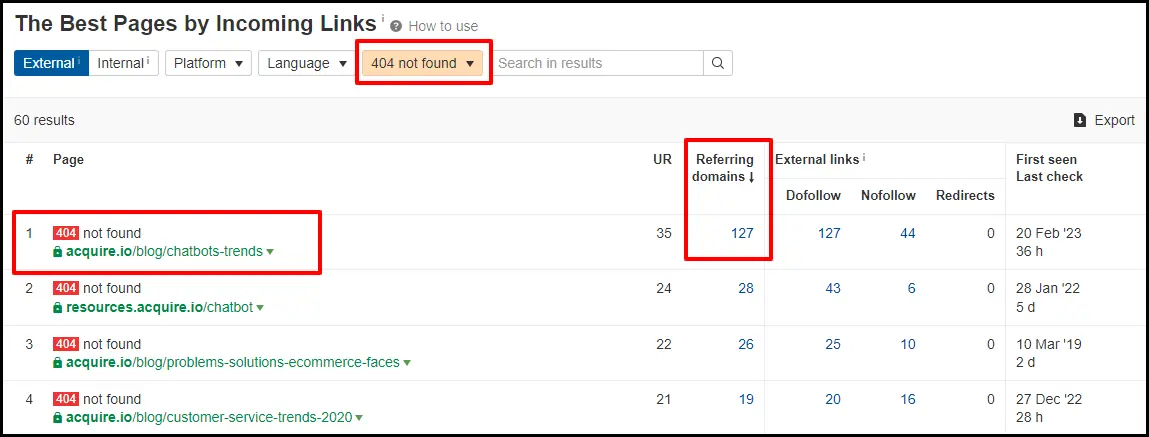
SaaS Link Building Playbook for Faster SEO Wins
Learn proven SaaS link building tactics to rank faster, boost DR, and drive signups with high-quality backlinks.
Some websites earn attention. Others collect it. That’s where Citation Flow comes in.
Built by Majestic, this SEO metric measures how popular a page is based purely on the number of links pointing to it—no judgment on quality, just volume.
If a high-scoring site links to yours, your Citation Flow improves. If it’s a low-scoring one, you might feel the drag.
It’s a system that rewards presence over substance, and understanding it can shape how you build backlinks, assess competitors, or clean up your link profile. Here’s how Citation Flow works—and why it still matters in 2025:
At a glance, Citation Flow looks like a simple metric. But under the hood, it quietly influences how link-building strategies evolve—and how websites gain ground (or lose it) in the rankings.
It doesn’t measure trust. It doesn’t measure content quality. It tracks momentum.
Here’s how that plays out:
Both Citation Flow (CF) and Trust Flow (TF) come from Majestic, and together, they give a fuller picture of a website’s backlink health.
CF looks at how many links point to a page—no context, just volume. TF goes deeper, analyzing where those links come from and how trustworthy they are.
One measures popularity, the other filters the noise. The balance between them is what shapes a website’s trust rank—revealing more than either metric alone.
Here’s how they differ:
Aspect | Citation Flow (CF) | Trust Flow (TF) |
What it measures | Number of backlinks | Trustworthiness of backlinks |
Focus | Volume | Quality |
Calculation Basis | Link count and link velocity | Links from vetted, high-authority sites |
Score Range | 0–100 | 0–100 |
High Score Example | Viral content shared across hundreds of low-quality forums | A feature on a major publication like TechCrunch or Forbes |
Used For | Gauging link popularity | Evaluating backlink trust and domain credibility |
Limitations | Can be inflated by spam or irrelevant links | Relies on Majestic’s trust seed sites, which may miss some data |
Ideal Use | Identify high-link-volume domains for outreach | Filter risky backlinks; spot toxic domains |
Knowing your Citation Flow score is useful, but knowing how to track it properly is what makes it actionable. Instead of checking once and forgetting, you’ll want a system that helps you see movement over time and spot unusual patterns.
This is the source of the metric, so it’s the most direct way to check CF. Just plug your domain into the search bar and you’ll get a score from 0 to 100.
What’s more useful, though, is the context—Majestic also shows your site’s link profile, anchor texts, and even the CF of linking domains.
For example, if a link from a niche subreddit has a CF of 40, you know it’s carrying weight, even if the traffic is minimal.
Platforms like AgencyAnalytics, SE Ranking, or SERPstat integrate CF into broader dashboards. The value here is correlation—you can monitor CF alongside organic traffic, keyword movement, or domain authority.
For instance, if CF jumps while conversions don’t, that’s your signal to look at link quality or placement strategy, not just quantity.
This isn’t about checking daily. It’s about watching patterns monthly. If your CF rises fast but your Trust Flow lags, it may be a sign of spammy links slipping in. Spotting that early gives you time to clean up before it becomes a problem, which Google cares about.
There’s no universal “perfect” Citation Flow score—but there are smart benchmarks that help you interpret what the number says about your site. CF needs context to be meaningful, especially when you’re comparing across industries or evaluating risk in link building.
Here’s a quick checklist to frame your analysis:
Improving your Citation Flow isn’t about getting more links—it’s about getting the right kind in the right context. Here’s where to start:

One strong backlink from a trusted site can outweigh dozens of low-grade ones. Say you write a guest article for a niche publication that covers marketing strategies with real-world case studies.
If your content ties into a recent trend—like how AI content affects bounce rates—and the piece gets picked up in a few newsletters, those backlinks carry both relevance and authority.
Alternatively, think of evergreen content like “SEO trends for B2B in 2025.” When it hits the right pain point, others will cite it in blog roundups or agency insights.
These links aren’t bought or begged for—they’re earned because the content solved a problem or filled a gap.

Not every strategy needs to start from scratch. Broken link building is about finding what’s already broken and replacing it with something better.
Let’s say a local marketing blog links to an outdated restaurant SEO guide from 2016, and that link now leads to a 404 page.
Reach out, show them your updated content on local SEO trends for 2025, and offer it as a fix. It’s helpful for them, valuable for users, and a high-impact opportunity for you.
This works especially well in niches where content ages fast and refreshes are in demand.

Directories might sound old-school, but they still carry serious SEO weight when handled properly. Submitting your business to platforms like Yelp, Google Business Profile, or even niche directories like Dentistry Today (for dental clinics) can build structured, consistent citations.
Just make sure your Name, Address, and Phone number (NAP) are identical across listings. Google notices the consistency, and so do users. If your Denver-based business shows up differently on three platforms, it can confuse local search crawlers and drag down your Citation Flow.
Most sites focus so much on earning external links that they overlook the value of internal ones. If you’ve got blog posts or service pages with strong Citation Flow, link to them from other parts of your site.
This spreads link equity and helps search engines better understand your site structure. Use clear, descriptive anchor text—avoid vague phrases like “click here.”
For example, linking from your homepage to a guide titled “Denver SEO Trends in 2025” using that exact phrase helps reinforce topical relevance and passes authority where it counts.
A bloated link profile filled with junk does more harm than good. Set a schedule to audit your backlinks monthly or quarterly using tools like Majestic SEO or Ahrefs.
Look for links from irrelevant domains, shady directories, or foreign-language spam sites. If a pattern looks suspicious, don’t sit on it. Use Google’s Disavow Tool to flag those links.
For example, if you’re a Denver-based health brand getting backlinks from casino sites, those links aren’t helping you—they’re dragging your Citation Flow down.
In local SEO, Citation Flow plays a quiet but powerful role. It reflects how many sites link to your business, helping search engines gauge your visibility and authority in a local context.
A strong CF score means your business is being referenced across credible sources—local directories, community blogs, event listings—all of which boost your presence in local search results.
For example, a restaurant mentioned in local food blogs, city guides, and event calendars builds more influence than one relying solely on its Google listing. Strong Citation Flow supports higher map rankings and more qualified foot traffic.
Tracking Citation Flow involves knowing where your links are coming from, what they’re doing, and whether they’re worth keeping. Here are a few tools that help decode your backlink management profile:

Learn proven SaaS link building tactics to rank faster, boost DR, and drive signups with high-quality backlinks.

Learn how to pick a trusted white label link partner for your SaaS agency. Avoid spammy links and scale SEO growth.

Uncover the real value of forum backlinks in 2025—learn smart strategies, avoid risks, and build SEO trust effectively.
